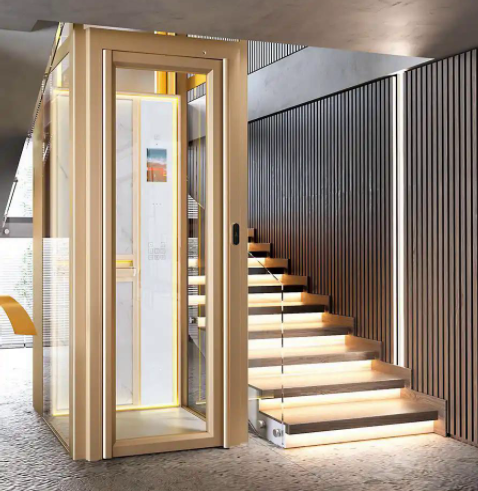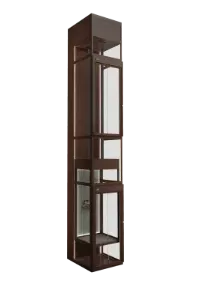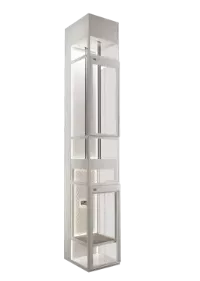An elevator is a power-driven electromechanical device that uses a rigid guide rail or steps (treads) along a fixed path to lift, lower, or transport people or goods horizontally. This includes passenger (or freight) elevators, escalators, and moving walkways.
An elevator is a type of transportation device that serves specific floors within a building, with its car running on at least two rigid tracks perpendicular to the horizontal plane or inclined at an angle of less than 15 degrees to the vertical. There are also stepped elevators, with treads mounted on tracks and running continuously, commonly known as escalators or moving walkways. These are fixed elevators that serve specific floors. A vertical elevator has a car that runs between at least two rigid guide rails perpendicular to the horizontal plane or inclined at an angle of less than 15 degrees.

The car size and structure facilitate passenger entry and exit and loading and unloading. Conventionally, regardless of the drive method, villa elevators are a general term for vertical transportation within a building. Elevators can be categorized by speed as low-speed elevators (under 4 m/s), high-speed elevators (4-12 m/s), and high-speed elevators (over 12 m/s). Hydraulic elevators began to appear in the mid-19th century and are still used in low-rise buildings today. In 1852, E.G. Otis of the United States developed a safety elevator using a wire rope. Further improvements were made in the 1980s, such as the use of an electric motor driving a winding drum through a worm gear and the introduction of a counterweight. At the end of the 19th century, friction wheel drive was adopted, significantly increasing the height of elevators.
Traditionally, regardless of the drive method, home elevators are a general term for vertical transportation within a building. With increasing awareness of environmental protection, major elevator companies have adopted powder coating for their elevators. This is a new, environmentally friendly, solvent-free coating with many properties superior to oil.
songyada elevators primarily consist of a traction machine (winch), guide rails, counterweight, safety devices (such as speed limiters, safety gear, and buffers), signal control systems, a car, and landing doors. These components are installed in the building's hoistway and machine room. A wire rope friction drive is typically used. The wire rope passes over a traction sheave, connected to the car and counterweight at each end. The electric motor drives the traction sheave to raise and lower the car. Elevator manufacturers require safety, reliability, high conveying efficiency, accurate leveling, and comfortable riding. The basic parameters of an elevator include rated load capacity, number of passengers, rated speed, car dimensions, and shaft type.





